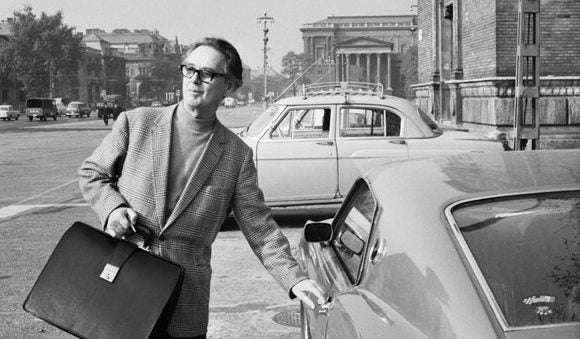Vasarely Go Home

Andreas Fogarasi solo show.
On Saturday, October 18th, 1969 the Mücsarnok Kunsthalle in Budapest opened a retrospective exhibition of Victor Vasarely, his biggest exhibition ever. It was an important public event and the opening attracted a huge crowd. Among the visitors was the artist János Major who, on that occasion held a discreet one-person protest. He had a small sign in his pocket, that he held up from time to time, to show it to friends and colleagues in the crowd. The sign read: Vasarely Go Home.
The 1960s in Hungary were a time of slow political “normalization”, and there was a cultural policy of actively reestablishing contacts with artists living abroad. While Vasarely’s exhbition was an “import” of international art, it was at the same time a reclamation of Vasarely as a Hungarian, so that one can also speak of a cultural “export”. Hungarian avant-garde art of that time was continuially suppressed by the authorities, so the show was met with some optimist expectation but also with criticism from the local artistic scene.
Andreas Fogarasi’s video Vasarely Go Home consists of interviews with artists and other participants of the cultural scene active at that time in Budapest. They talk about the importance of the exhibition and the work of Victor Vasarely for their practice and the Hungarian art scene, as well as about János Major and his action. Some of them were witnesses to that very evening, but they also talk in more general terms about this import/export of a former avant-garde practice and its political background and relevance in 1969.
The video was produced for Museo Reina Sofia in Madrid and is shown for the first time in Paris. It is accompanied by smaller works and editions surrounding the project, among others an early work that Fogarasi produced when
he was still a student: He learned Vasarely’s handwriting and signature and appropriated and rewrote his texts and statements. Adding feminist self-confessions, quirky remarks and mundane observations and notes, it includes a “modernist” shopping list for, a.o. “Milk, Eggs, Red Bull, Actimell, paroles, …”
For the opening on may 18, from 15 to 20h there will be an intermittant program of short talks by Andreas Fogarasi and by Edit Sasvári, director of the Lajos Kassák Museum, Budapest and contributor to the publication “Vasarely Go Home” (Spector Books, Leipzig), that will also be available at the gallery.
Andreas Fogarasi (Vienna, 1977) uses forms of display that are reminiscent of minimalism and conceptual art to explore questions of space and representation. Between a documentary and a sculptural practice, he critically analyses the aesthetisation and economization of urban space and the role of architecture and the cultural field in contemporary society.
His works have been shown internationally at institutions like the Museo Tamayo, Mexico City, New Museum, New York; Grazer Kunstverein, Graz; Kunstverein Düsseldorf; MAK Center for Art and Architecture, Los Angeles; European Kunsthalle, Cologne; MSU, Zagreb; CAC, Vilnius; and Palais de Tokyo, Paris. His solo exhibitions include: Kunsthalle Vienna (2019); Galerie Thomas Bernard, Paris (2018); Georg Kargl Fine Arts, Vienna (2017); Proyectos Monclova, Mexico City (2016); MAK Center, Los Angeles (with Oscar Tuazon); Galeria Vermelho, Sao Paulo; GfZK – Museum of Contemporary Art, Leipzig; Museum Haus Konstruktiv, Zürich (2014); Prefix ICA, Toronto (2012); Museo Reina Sofia, Madrid, CAAC, Sevilla (2011); Ludwig Forum, Aachen (2010); MAK, Vienna; Lombard Freid-Projects, New York (2008) and the 52. Biennale di Venezia (2007), where his exhibition Kultur und
Freizeit at the Hungarian Pavilion was awarded the Golden Lion for best national participation.